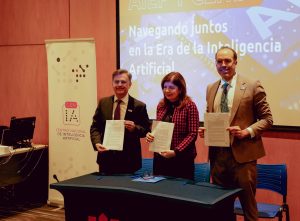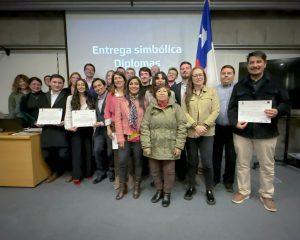Denis Parra, investigador principal del Cenia y profesor del Departamento de Ciencias de la Computación de la Pontificia Universidad Católica de Chile, fue invitado a como keynote speaker, en marzo pasado, durante el primer workshop APEx-UI 2022, cuyo tema central se centró en interfaces de usuario adaptativas, explicables y personalizadas, que se llevó a cabo de forma virtual y de manera conjunta a la Conferencia ACM IUI 2022 en Finlandia.

Durante el workshop Parra participó como keynote speaker con la charla “From Transparency and Users’ Control in Recommender System Interfaces to Guidelines for Visual XAI”, donde expuso la revisión de investigaciones disponibles durante los últimos 20 años sobre interfaces visuales para sistemas de recomendación, comparándolas con las últimas investigaciones sobre interfaces visuales para sistemas de IA explicables (XAI).
Esta revisión presenta nuevas ideas y preguntas para el trabajo actual y futuro, como por ejemplo, la idea de que una inteligencia artificial sea capaz de entregar diferentes respuestas según el contexto del usuario: “de la misma forma que a un estudiante de colegio no le explicas con el mismo nivel de detalles un fenómeno físico que a un estudiante de física en la universidad, no puedes esperar que Alexa o Google home entregue sugerencias de la misma forma a un niño y a un adulto. En la actualidad, los métodos de explicabilidad de IA generan respuestas independiente de quien las recibe. Usar visualizaciones podría ayudar a encontrar formas diferentes de adaptar explicaciones”, aclaró Parra.
Para el investigador la importancia de dar una charla invitado en un workshop de esta conferencia “permite visibilizar el trabajo del Cenia que integra aspectos humanos y otros más bien técnicos en el desarrollo de aplicaciones de AI”.
Además de ser Keynote speaker, Denis Parra fue co-autor del artículo “Similarity-Based Explanations meet Matrix Factorization vía Structure-Preserving Embeddings” que investiga formas de mejorar las recomendaciones personalizadas, realizado en colaboración de los investigadores Leandro Balby Marinho y Júlio Barreto Guedes da Costa, de la Universidade Federal de Campina Grande de Brasil.
La Conferencia ACM IUI se realiza anualmente, y se dedica a reunir expertos de distintas partes del mundo para abordar temas sobre inteligencia artificial y la interacción humano-computador.
Más información:
-
Keynotes. Denis Parra APEx-UI 2022 https://sites.google.com/view/apex-ui-2022/keynotes







